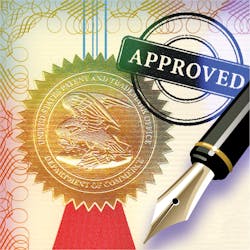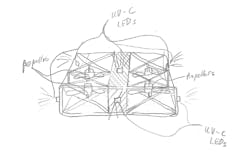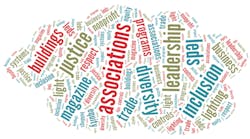As a patent attorney, and former patent examiner with the United States Patent & Trademark Office (USPTO) in the unit handling inventions related to the use of LEDs in lighting, a great portion of my professional life has been devoted to evaluating the patentability of different sorts of LED inventions. It’s a fun job. You get to learn about new things being developed and spend time around innovative people. And by facilitating the patent process, you are a part of the team, which can be thrilling. Albeit vicariously, you truly share in the ups and downs of the businesses you represent as you attempt to patent the things they create.
Innovation is often driven by world events that couple a widely-known problem with a sense of urgency. The attacks of September 11 immediately created a patent filing frenzy in numerous areas — e.g., flight security technologies, cockpit door configurations. While the Deepwater Horizon oil spill was still occurring, a surprising number of patents were filed, all directed to ways to stop a then-continuous flow of oil into the Gulf of Mexico. These inventors are probably the same sorts of people who, when your car breaks down and leaves you stranded on the side of the road, will get under the hood with you. They want to solve the problem.
Once bitten by the patent bug…
The patent bug also got to me a bit. In the past, I had installed an antimicrobial UV-C emitter into the HVAC system at my home. In March, I had also purchased one of the Edison-socket retrofit LED emitters (these are often manifested as corn-cob-looking devices) for home sterilization, thinking it might be useful. Once placed, these lights will disinfect illuminated surfaces but will not hit surfaces that are obstructed. For example, a surface behind a wall or other impediment would be missed. Furthermore, the typical room includes numerous protruding structures — e.g., handles and door knobs, which have dark sides shielded from the disinfecting light. To solve this problem, a user would have to continually reposition a fixed-point light source (like my corn-cob LED device). Full decontamination would require moving the source to numerous different locations and would involve difficult angling. I knew about portable handheld wands. These have been around for years, but due to the virus and opportunistic advertisers, they’ve been made to appear newly invented. Wanding a space is very labor intensive and leaves room for human error, not to mention that the devices themselves often do not come with many protective mechanisms for preventing damage to human skin or eyes, and may degrade materials over time as well if not carefully designed.
Motivated to overcome these disadvantages, and given the abundance of time afforded by stay-at-home orders in April, I came up with something I thought would help. The idea was to mount UV-C emitters onto the outside of a cage drone quadcopter. For those of you unfamiliar, the drone cage protects the outside environment (e.g., a user, property) from the rapidly rotating propellers. With respect to overall shape, I thought the cage should present a square or rectangular profile to enable it travel along walls, along corners, etc. A rough illustration of the concept can be seen in Fig. 1.
Because exposure to UV-C can be harmful to humans, the drone would have to be automated for activation when an area is unoccupied. Much in the same way a robot vacuum uses sensors along with programming to sweep a desired area, the drone could be programmed to automatically travel along walls and sense surfaces and structures for UV-C treatment using machine learning. And the device could be further programmed (using known drone and illumination technologies) to treat areas where human touch is likely — e.g., knobs, countertops, and other areas located between knee and shoulder level. Areas less critical to treat (ceilings, floors) could be eliminated from the flight plan. The user could simply turn the device on, leave, and upon return, the targeted areas would be fully decontaminated. There would be no darkside exceptions for knobs, handles, or other structures, because the illumination would occur from a plethora of angles.
Currently, there is no prototype, and there are no real plans or desire to make one, so an actual working thing will probably never happen. And it also may not be possible to make the product good enough to market anyway given the current state of technology. Today’s UV-C LEDs are fairly inefficient compared to those used in general illumination applications, and would quickly drain any battery sized to enable my drone configuration to fly for any length of time, if at all. Additionally, today’s UV-C LEDs may lack the necessary reliability or effectiveness in disinfecting if utilized as described. However, it is very likely that the necessary technologies will be developed over time. Given the resources to throw a group of competent engineers at the drone aerodynamics and controls needed, the project could be accomplished since all the technologies to be incorporated are known. (Spoiler alert: I’m not the only one to come up with this general idea, as you’ll learn soon.)
Is the thing ripe for filing?
Will the USPTO let us move forward with a patent even though the thing doesn’t really work (yet)? There is a legal requirement that any invention be enabled by what is disclosed in the application that is sent to the patent office. More specifically, a person of ordinary skill in the field must be taught (by the application) how to make and use the invention without engaging in “undue experimentation.” The USPTO will not require an inventor to describe how things in the application work if they are known. Since the aerodynamics of our drone concept, as well as the automation involving sensors and necessary computer processes are known, the patent office would not likely require me to provide any specifics in those regards. Thus, I can avoid having these ideas fully developed before filing. The real novelty is in the incorporation of the UV-C LEDs into the drone, which can be easily shown by describing the LEDs available today and showing them in the drawings.
The question of whether we can patent an invention including elements which have not yet been developed to a point of marketability is not new. We’ve actually dealt with that issue before. While I was an examiner in the late 1990s and early 2000s, LEDs were in wide use for indicator lamp functions but were far from useful for white indoor or outdoor lighting. Nevertheless, patent applications were being filed for these not-yet-ripe implementations. See an Edison retrofit lamp concept included in an application filed in 2000 (Fig. 2) as an example.
The white-light-by-color-mixing arrangement, which uses differently-colored and separately-packaged LEDs (labeled 320 in the figure), did not meet the efficiency or quality requirements of its incandescent ancestors. Still, that did not prevent the applicant from filing for and getting a patent on the half-baked white-light LED arrangement.
Why? Because the patent office didn’t (and still does not) stop this kind of thing from becoming a patent. There is no requirement of any level of effectiveness. A device can work a little and still be patentable. The patent office also does not require regulatory compliance, safety, or the clearing of other hurdles precedent to marketing a product that actually works and is beneficial.
So, with respect to the drone concept, we can file for a patent even if the currently existing UV-C LEDs consume too much power, and drain the battery after only a minute of flight time. We can file even though our drone concept — if employed in its current form — presents significant dangers to consumers due to UV-C exposure. You can even patent if you never fully develop the product. Surprisingly, the patent office almost never requires a working model be presented in the prosecution process and even expressly discourages examiners from requiring one.
Thus, the more relevant issue usually comes down to whether the invention is sufficiently novel and non-obvious to be patented. Here, the potential novelty, in my view, centered around the incorporation of the UV-C LEDs into the drone to enable exposure from all angles and in limiting emission to areas likely to be contaminated with virus.
Researching novelty is always a good idea before filing. You can hire a patent searcher to do it for you, but it is always a good idea to do a little poking around yourself on the Internet using keywords to see if someone has already invented your concept. There are also numerous online searchable databases that can help you do this. That’s what I did regarding the UV-C drone concept, and turned up a website disclosing an automated robot on wheels capable of rolling to different areas in a hotel room, and emitting UV-C to disinfect surfaces from ground-based vantage points. This was disappointing, since it would probably prevent me getting a patent on the broad concept of automatically bathing a room with UV-C from different angles, but at least I still had the possibility of getting a patent for the idea of a flying emitter enabling UV-C emissions from above.
Unfortunately, however, I ultimately found a UV-C LED flying robot in a US Patent filed in 2018 (see Fig. 3).
Referencing the figure, the flying robot vacuum in the publication includes a plurality of UV-C emitters (labeled 504) mounted on a conventional robot vacuum (502). Two propellers (503) extend laterally from opposite sides of the device to supposedly make it fly. The flying robot vacuum was included in the patent along with numerous other embodiments where UV-C LEDs were combined with (not kidding) a Neti pot, a cat litter box, a pill for human consumption, a hair curling/flattening iron, a catheter, a regular robot vacuum, and many other seemingly unrelated devices.
It was immediately apparent to me that the two-propeller UV-C LED robot vacuum as shown in Fig. 3 would not fly as needed. First of all, you need at least three — preferably four — thrust-producing devices, spaced apart, to make something like that levitate and move in all directions. Second, the weight of any robot vacuum would make it impossible to support in the air with the propellers shown.
Strange as it may seem, the drafter of the patent did not claim the flying robot vacuum embodiment as being inventive in the patent. And the embodiment is not at all a focal point of the patent. Why include it, then? The answer is that it is likely for defensive purposes, meaning it is intended to prevent others (like me!) from patenting the same thing by publishing it.
Only recently (upon penning this article) I’ve become aware of an ongoing, now public University of California–San Diego (UCSD) project of which you may be aware since it has been recently recognized on the LEDs Magazine website. The UCSD system uses a remote-controlled and camera-equipped quadcopter drone fortified with UV-C LEDs. Since a UCSD drone user is able to remotely navigate, they are able to disinfect an uninhabited room. And unlike my concept, the UCSD project seems to be progressing toward actual working embodiments — not only in terms of UV-C efficacy but also aerial support.
The UCSD quadcopter does not include all of the features contemplated in my cage drone, but some of the things lacking, such as a robotic approach to illuminate a room, are met by the combination of it with the robot vacuum patent. In order to combine two different publications in making an obviousness rejection, the patent office has to provide supporting rationale. Here that seems likely, since both the UCSD drone and robot vacuum patent are in the same area of technology, and focused on the same goal: UV germicidal irradiation.
That does not mean that all is lost from a patent standpoint. I could still go for a patent covering the differences existing between the UCSD/robot vacuum combination and my concept. There are some important differences. For example, the square shape of the cage drone enables the sides to become flush with corners and walls. This allows the UV-C LEDs to be mounted transversely, such that light emitted will hit devices that stick out (e.g., knobs, handles) from a flat surface from the side, above, and below. Also, the automating of our drone to focus on certain coverage areas (e.g., countertops and other surfaces likely to be touched) is not shown in the publication, so that could still be gone after. But the potential for coverage is definitely narrowed by the UCSD project quadcopter in view of the robot vacuum publication. Essentially, my cage drone becomes a teaching point for this article instead of a valuable patent right.
Leftovers
In closing, it seems that the leveraging for patent rights relating to UV-C LED-based antimicrobial technologies will happen much in the same way they did in the development of white-light LEDs. Many filings will be made for concepts that are never implemented (like my cage drone and the robot vacuum), and things that are (like the UCSD project quadcopter). Meanwhile, things that don’t really work may be used to prevent an inventor from getting a patent (e.g., concepts incorporating UV-C LEDs that lack real-world, present-day quality and/or efficacy).
Get to know our expert
MARSHALL HONEYMAN ([email protected]) is a patent attorney for Erise IP, and is a former patent examiner in the Section of the Patent Office devoted to LED, as well as other illumination technologies.
For up-to-the-minute LED and SSL updates, why not follow us on Twitter? You’ll find curated content and commentary, as well as information on industry events, webcasts, and surveys on our LinkedIn Company Page and our Facebook page.



![FIG. 2. An Edison retrofit lamp concept was filed in the year 2000 despite the fact that LEDs had yet to reach viability in general illumination usage. Although the concept was not yet supported, the inventor was able to file without showing a workable prototype. [Image credit: Illustration from US Patent No. 7,350,936 issued to Ducharme et al. on Apr. 1, 2008; claiming priority to Nov. 18, 1999 (https://bit.ly/326IS1s).] FIG. 2. An Edison retrofit lamp concept was filed in the year 2000 despite the fact that LEDs had yet to reach viability in general illumination usage. Although the concept was not yet supported, the inventor was able to file without showing a workable prototype. [Image credit: Illustration from US Patent No. 7,350,936 issued to Ducharme et al. on Apr. 1, 2008; claiming priority to Nov. 18, 1999 (https://bit.ly/326IS1s).]](https://img.ledsmagazine.com/files/base/ebm/leds/image/2020/08/2009LED_ins_z2.5f4828128afc9.png?auto=format,compress&fit=max&q=45&h=371&height=371&w=250&width=250)
![FIG. 3. In an example of prior publication, this UV-C flying robot vacuum, while not likely to ever get off the ground in a literal sense, may have claim to the prior art of a flying UV-C emitting device, and that could prevent the quadcopter invention from being patented. [Image credit: Illustration (Fig. 9) from US Patent Application Publication No. 2019/0134242 made by Bonutti et al. on May 9, 2019; filed July 2, 2018 (https://bit.ly/3kZPXcT).] FIG. 3. In an example of prior publication, this UV-C flying robot vacuum, while not likely to ever get off the ground in a literal sense, may have claim to the prior art of a flying UV-C emitting device, and that could prevent the quadcopter invention from being patented. [Image credit: Illustration (Fig. 9) from US Patent Application Publication No. 2019/0134242 made by Bonutti et al. on May 9, 2019; filed July 2, 2018 (https://bit.ly/3kZPXcT).]](https://img.ledsmagazine.com/files/base/ebm/leds/image/2020/08/2009LED_ins_z3.5f482817de19c.png?auto=format,compress&fit=max&q=45&h=116&height=116&w=250&width=250)





